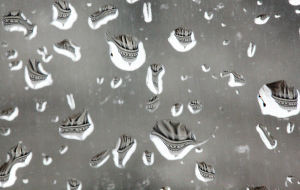If you do not have cable, your digital television reception can be affected by storms and high winds.
Antennas intercept the TV signal, which travels as a low-energy electromagnetic wave. The TV waves that are intercepted by the metal antenna cause electrons to move and that generates an electric current — which gets converted to the TV picture. If the TV carrier wave gets disturbed, your TV picture can be affected.
For the best digital TV reception, your antenna should have a clear line of sight to the TV broadcast tower. But many homes do not have that direct line. Any large structures can interfere with the signal. Trees are a common obstacle. On calm days, trees are not much of a problem but on windy days, strong winds cause the trees to sway.
Signals from the TV broadcast tower can overlap chaotically and generate a problem referred to as multi-path interference. This causes the signal to get distorted. If you are located far from the tower so the signal is weak to begin with, multi-path interference can result in a loss of your signal, particularly on UHF channels.
An outdoor antenna, especially if it is on a tall mast, can be moved by the wind which also causes a problem for reception. If you have an indoor antenna, on windy days you can try moving the antenna to a different location, such as an attic. You might make observations to see if there is a correlation between wind direction, wind strength and signal loss.




